There are many details to note when identifying wild mushrooms. On this site we’ve talked about spores, habitat, gills, and much more.
Yet physical characteristics such as shape and color are usually the first thing one notices upon finding a new mushroom. If you fully examine these traits, then the identification process becomes a feast for the senses!
I’ve divided some main mushroom features into three different sections: the stalk (stipe), the cap (pileus), and smell/taste.
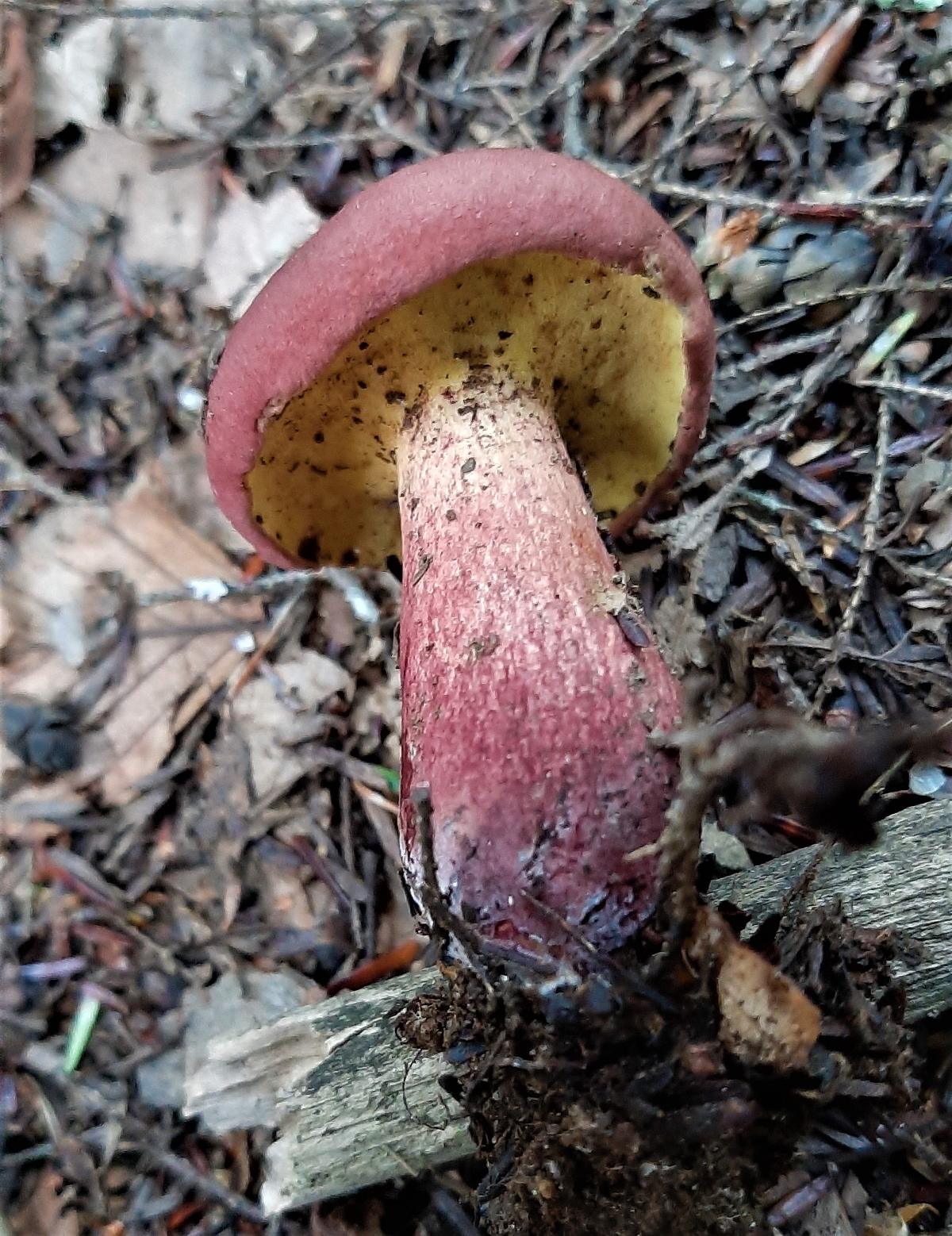
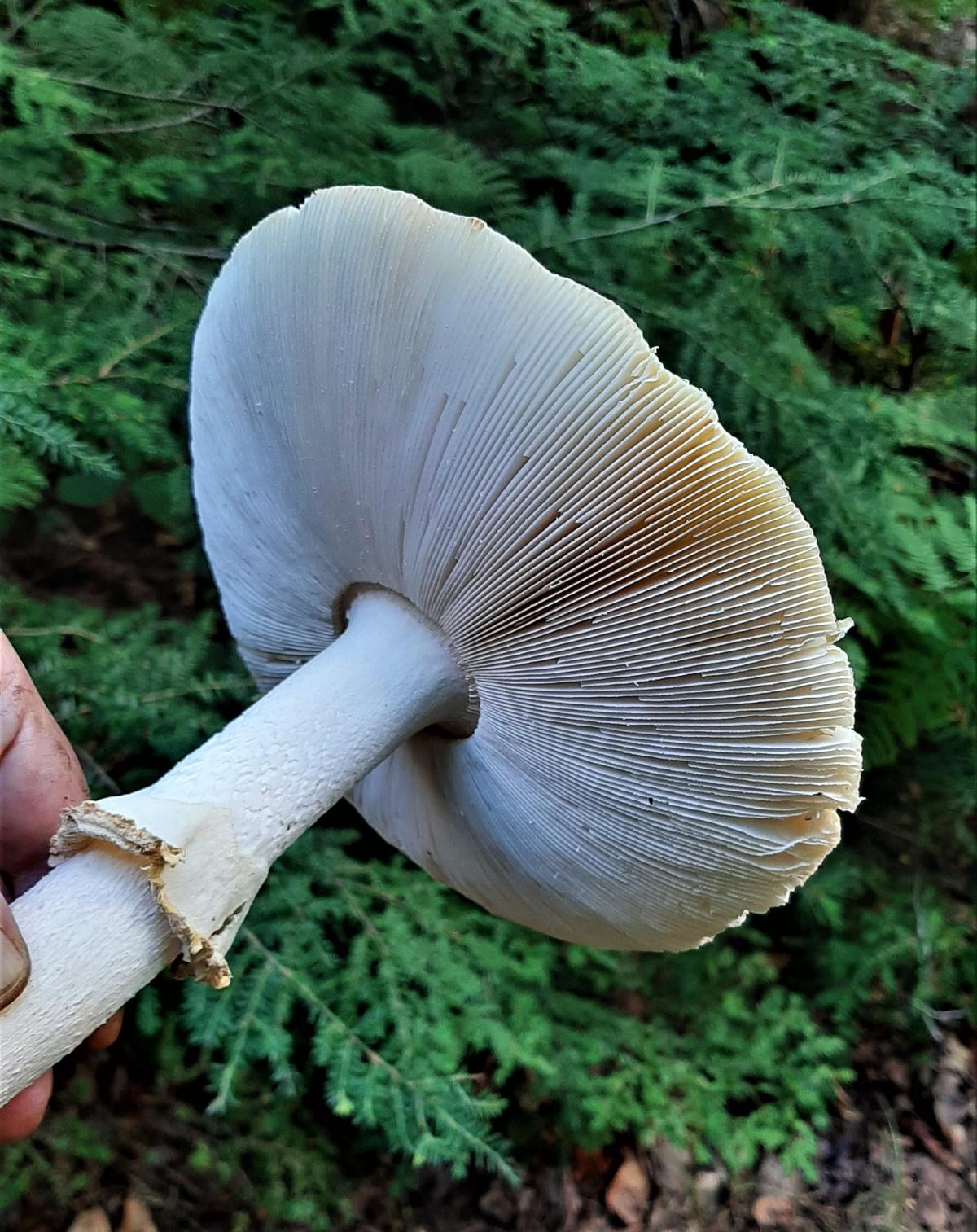
Jump to:
Stalks and Stipes
A stalk, referred to as the “stipe”, is the stem that supports the cap of a mushroom. Stipes evolved for spore dispersal purposes, as wind currents and animals will pick up more spores from a cap higher off the ground.
Not all mushrooms have stipes. Certain polypores, puffballs, and earthstars come to mind. The majority of gilled mushrooms do have one, commonly found at the center of the cap.
The stalk is an important feature to examine when identifying wild mushrooms. Some things to note:
- Shape and size. Is it long, thing, or fatter on the bottom?
- Color and bruising. If you pierce the stem with a knife or fingernail, does the area change color soon after?
- Whether the inside of the stipe is hollow or not.
- Any remnant of a partial veil (annulus) or universal veil (volva).
- Texture (brittle, soft, covered in hairs or scales).
- Whether the stipe has rhizomorphs (roots extending underground).
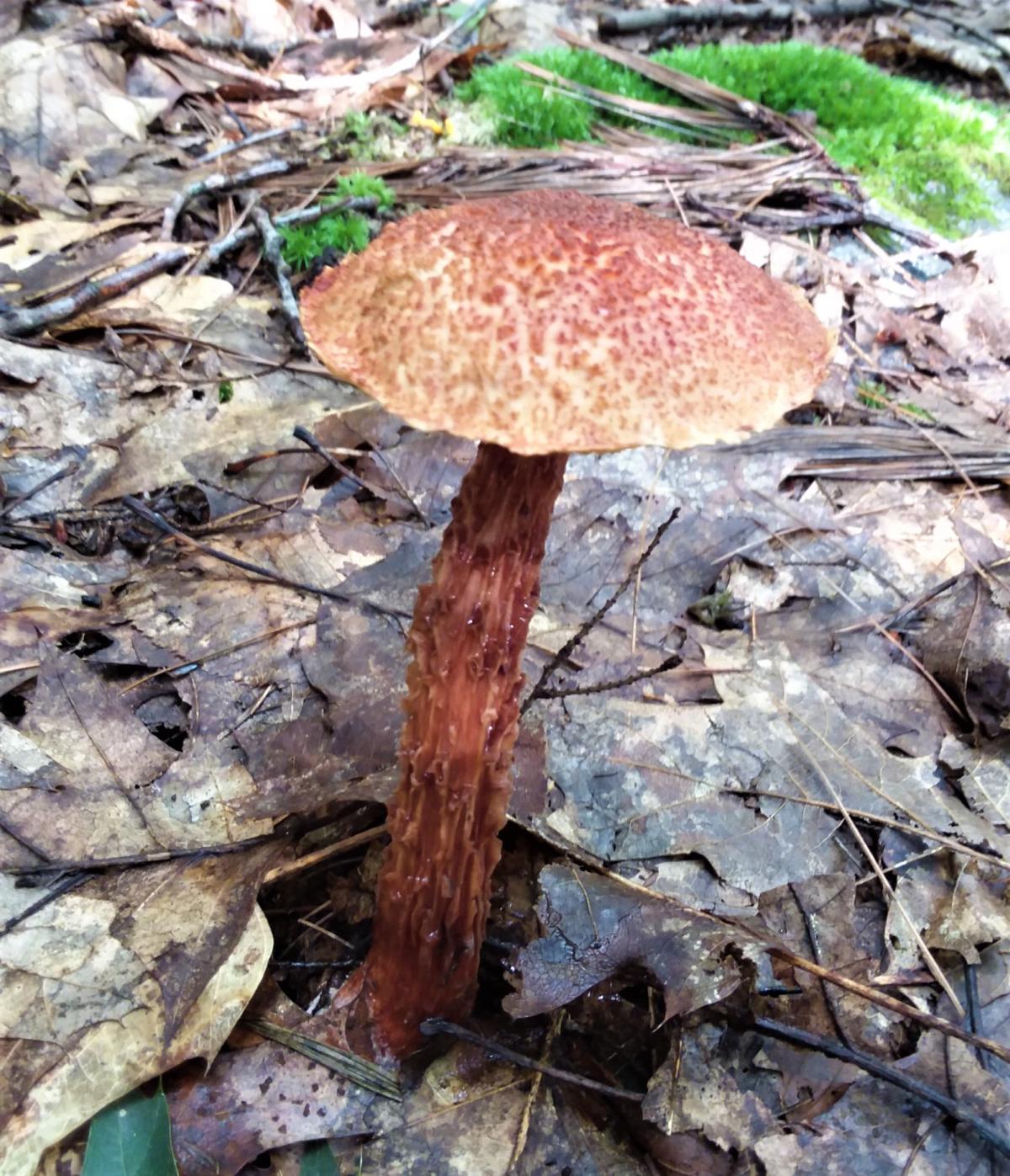
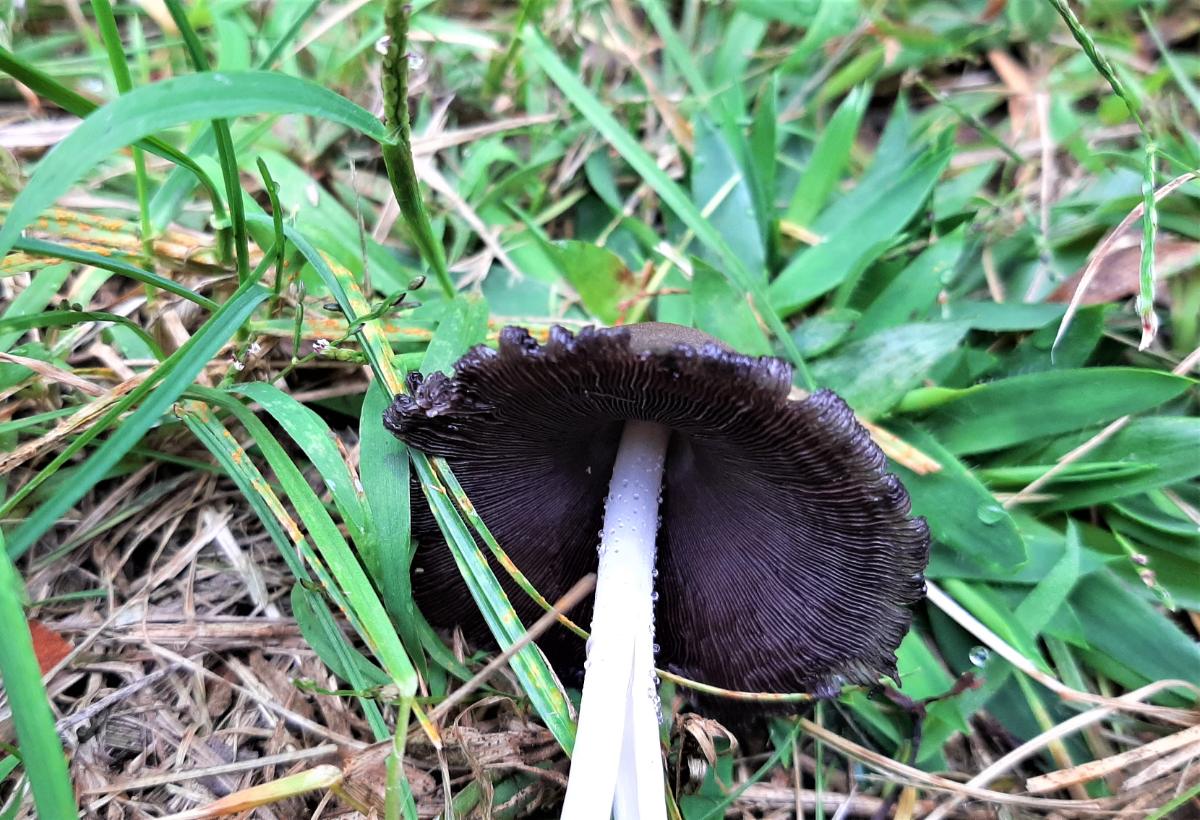
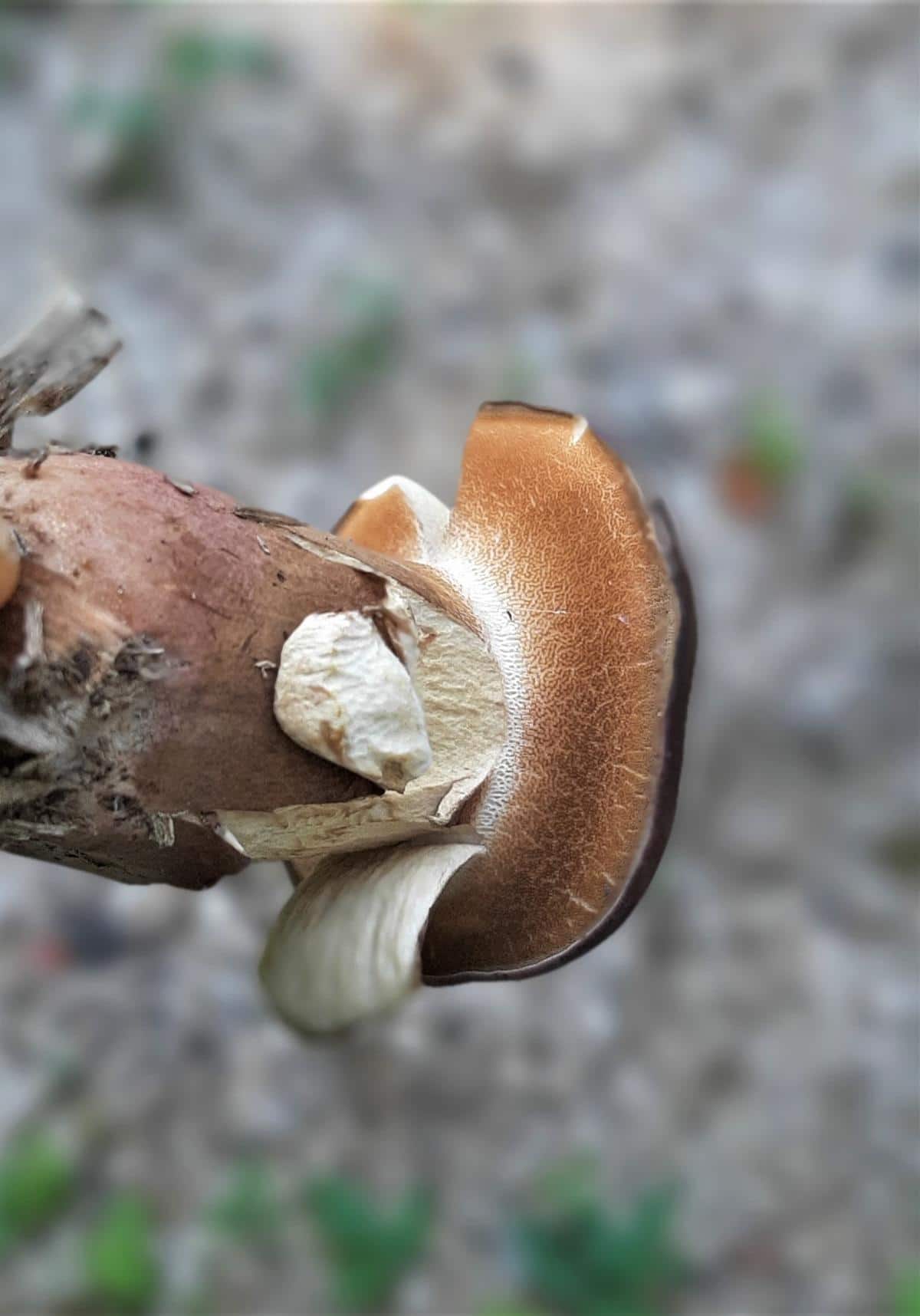
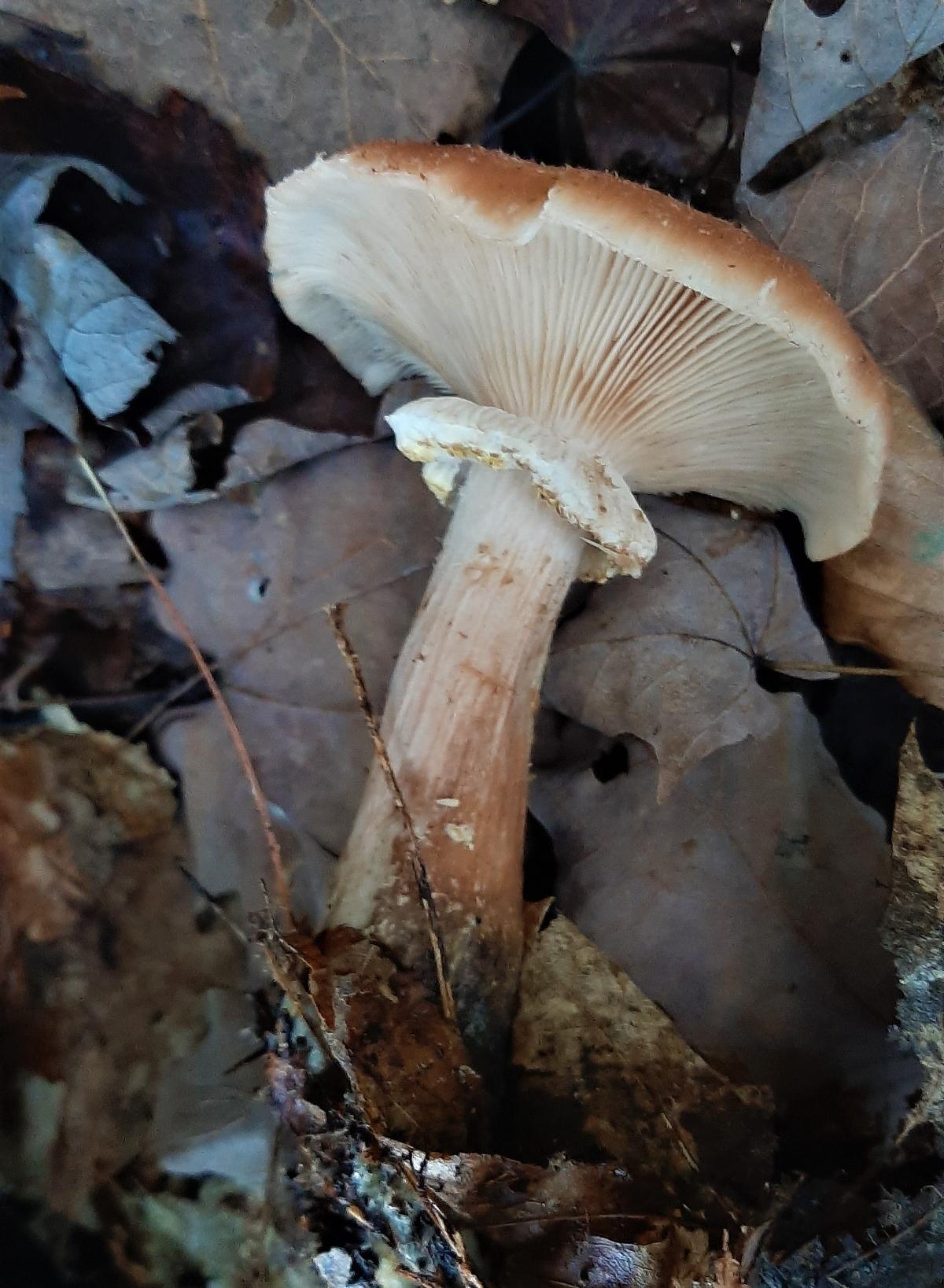
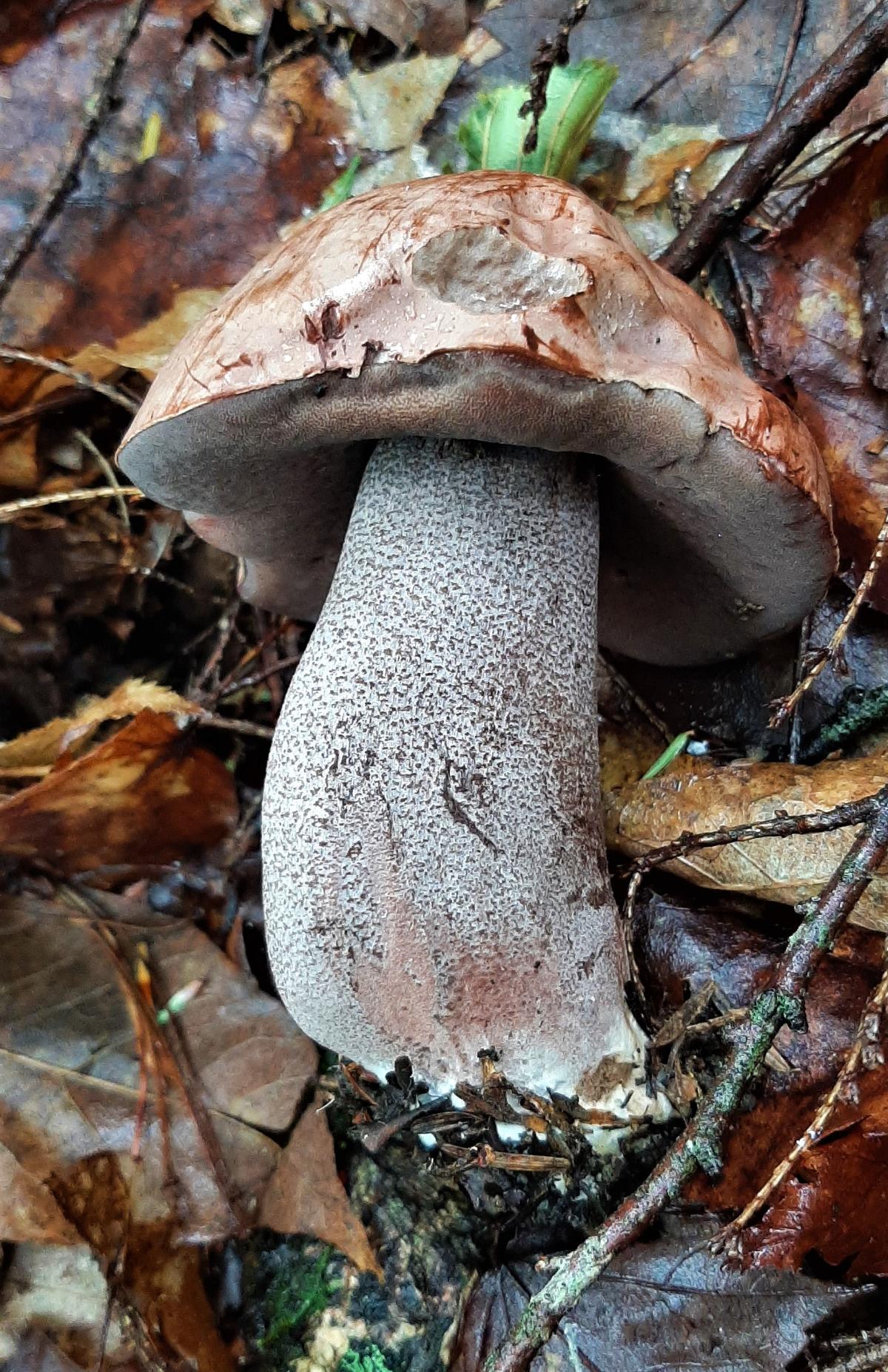
Some of these features appear underground. Thus it’s important to gently dig the mushroom up rather than just cutting it mid-stalk. Below are some stipe characteristic examples for a few mushrooms:
- Bracket fungus – no stalk
- Morels (Morchella species) – hollow
- Shaggy mane (Coprinus comatus) – hollow, cylindrical, bulbous at base
- Hypholoma capnoides – enlarged at base, covered in hairs
- Shiitake (Lentinula edodes) – stem bruises brown
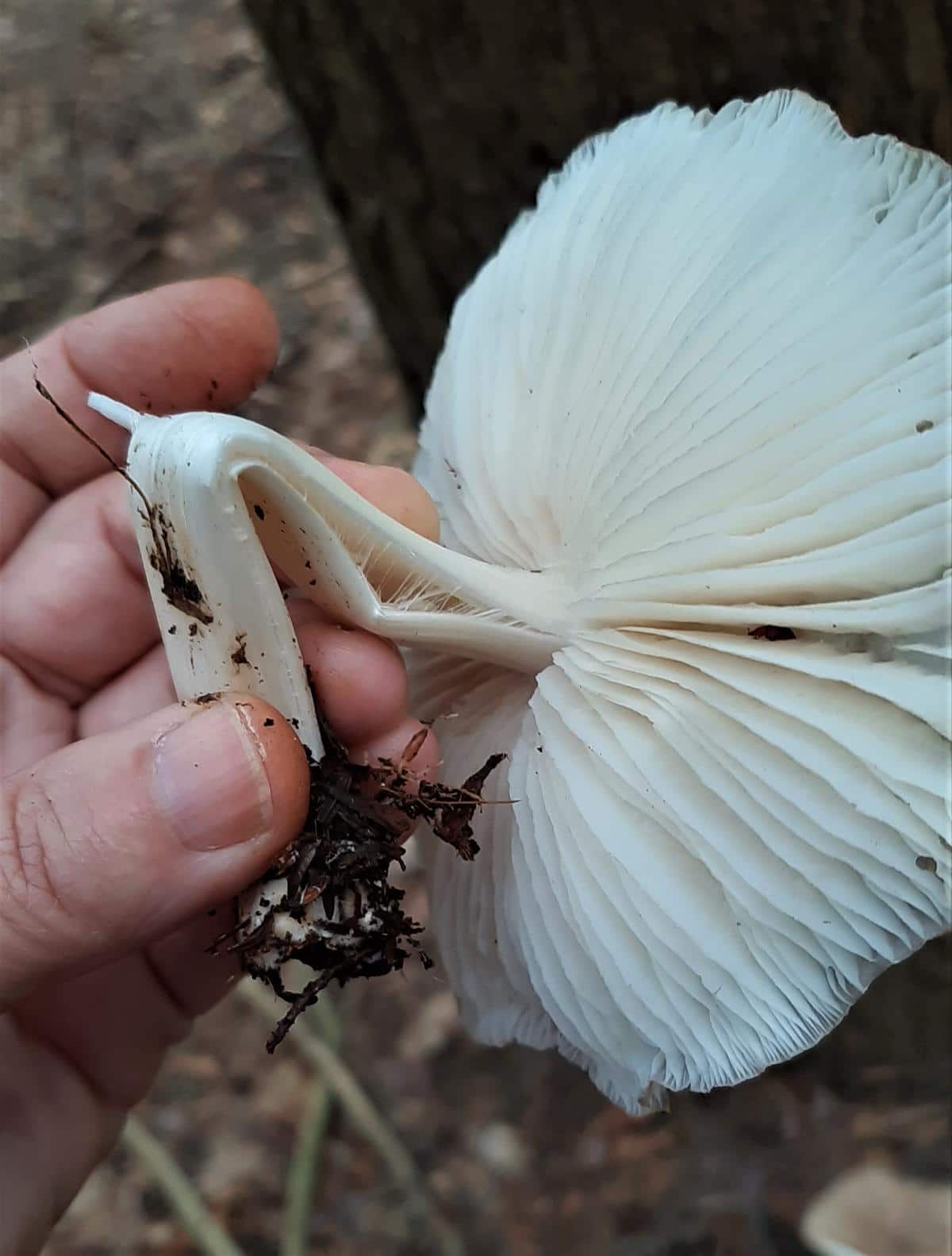
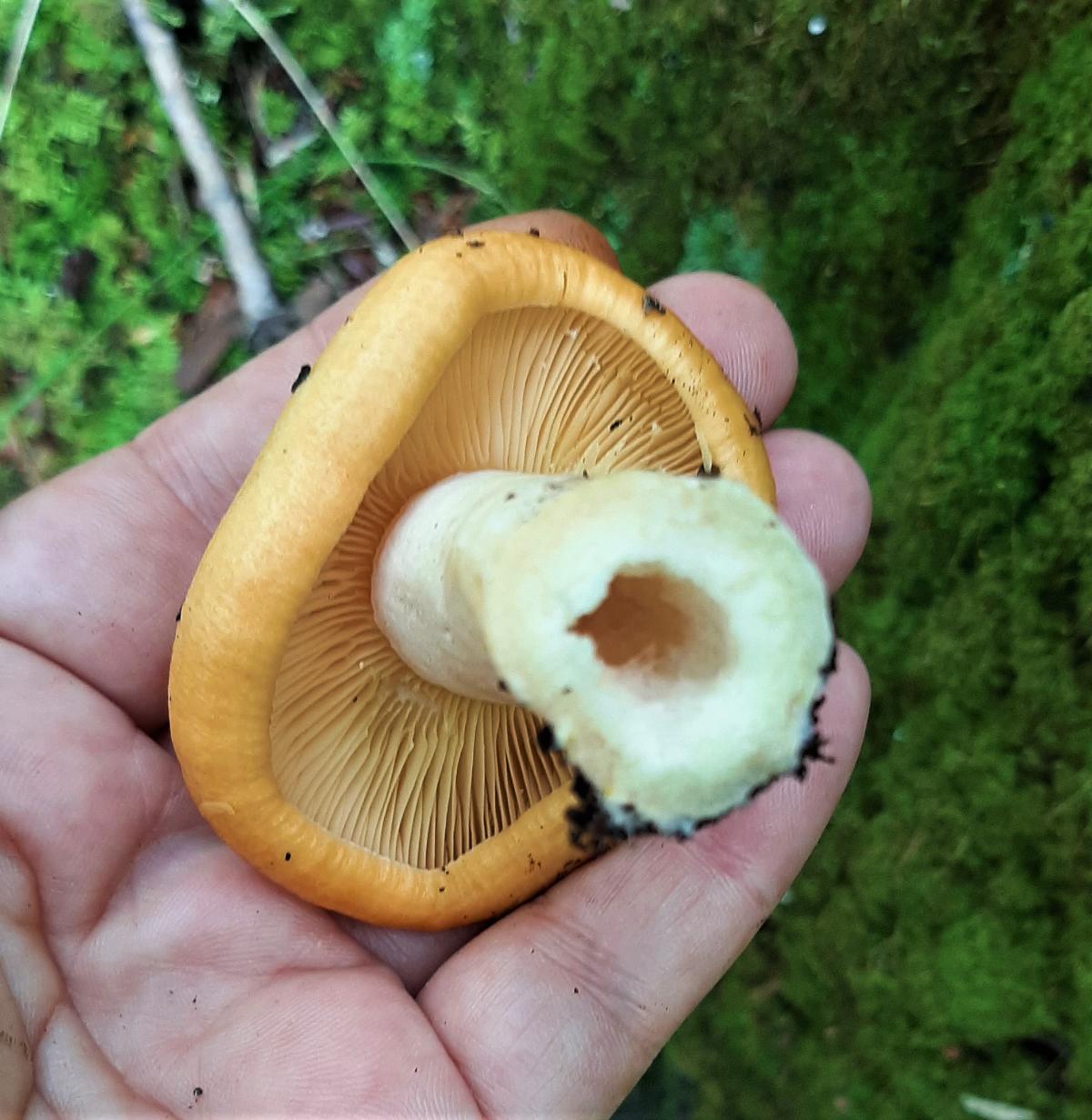
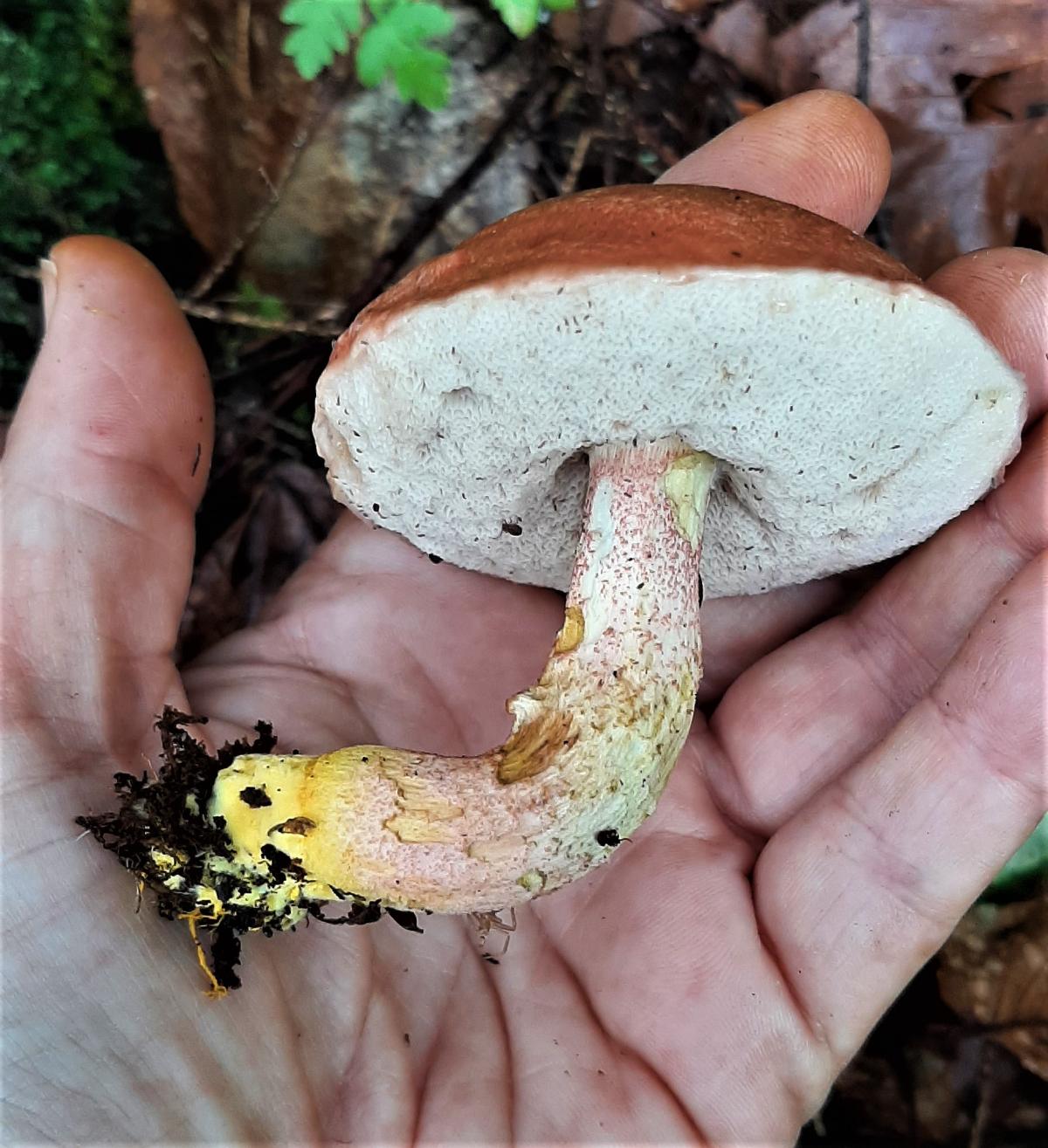
The Mushroom Pileus
Pileus is the mycological term for a mushroom cap, which is the fleshy fruit body of the organism. The pileus, like the stipe, is made up of interwoven multicellular filaments called hyphae. The filaments on the surface of the pileus may be colored or gelatinized, giving many mushrooms their familiar colors and slimy caps!
Caps evolved to release spores, and most species with a pileus have some sort of spore bearing tissue (hymenophore). To read more about this function see the page on gills, pores, and teeth.
Examples of different cap structures and appearances:
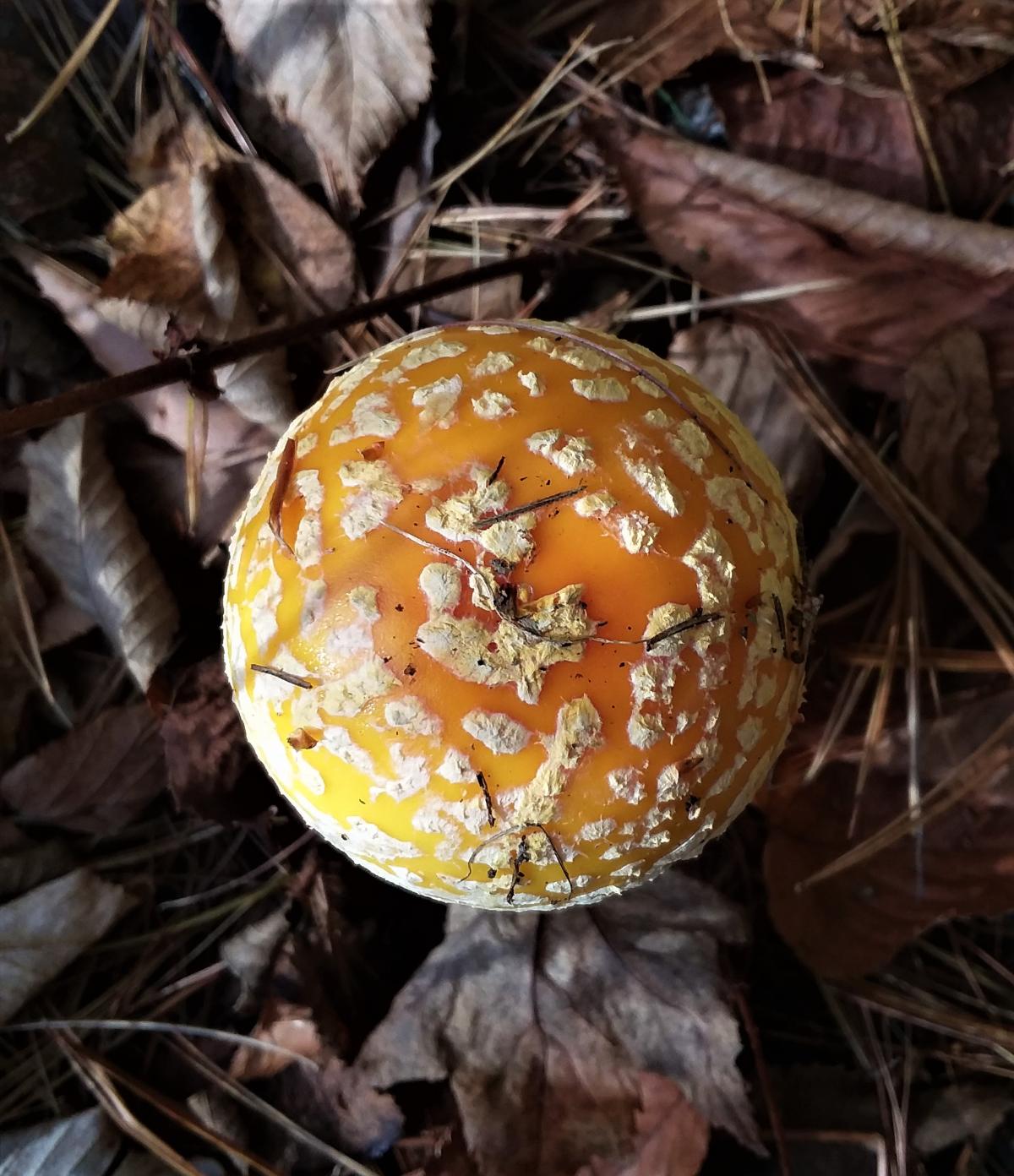
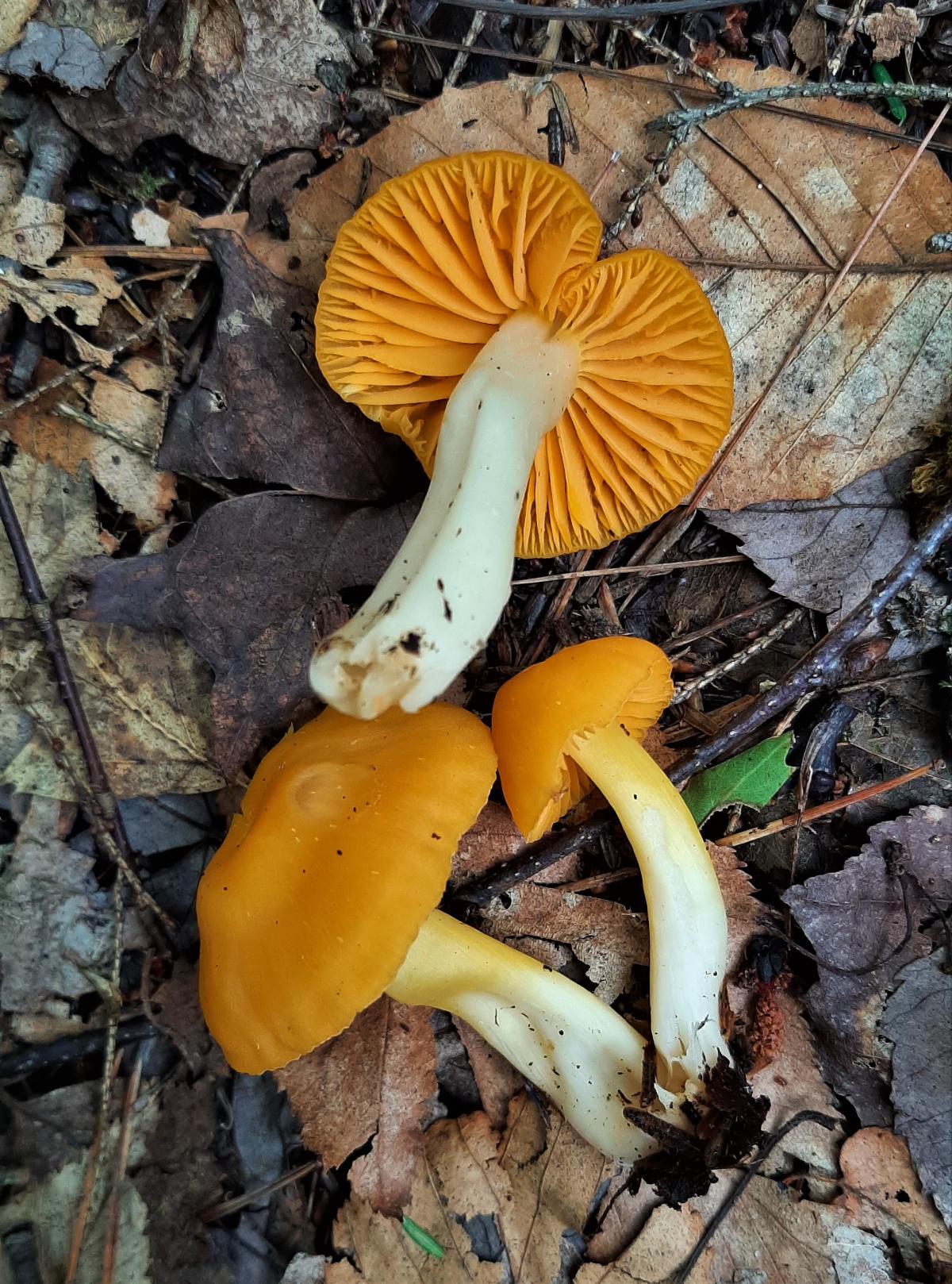
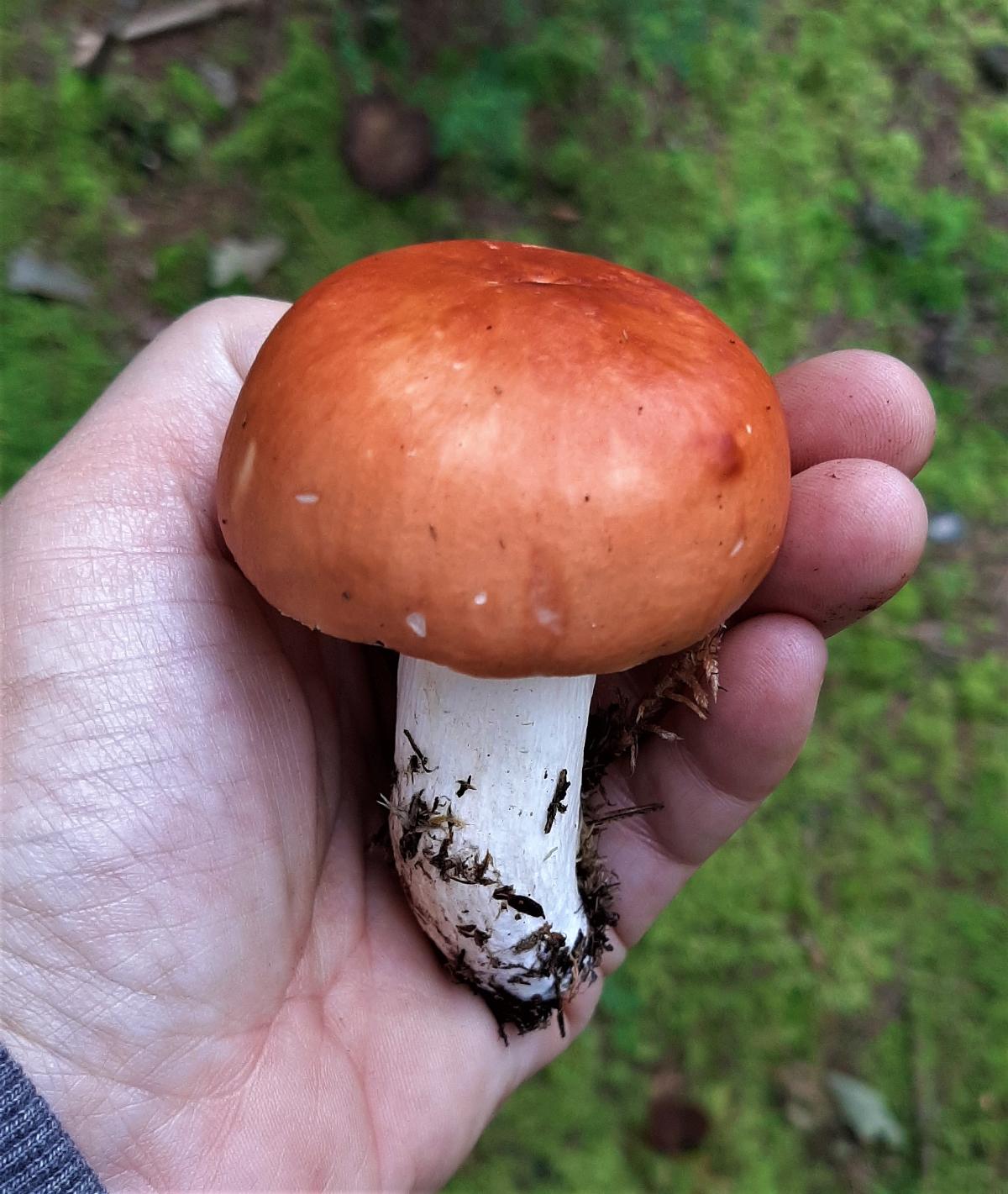
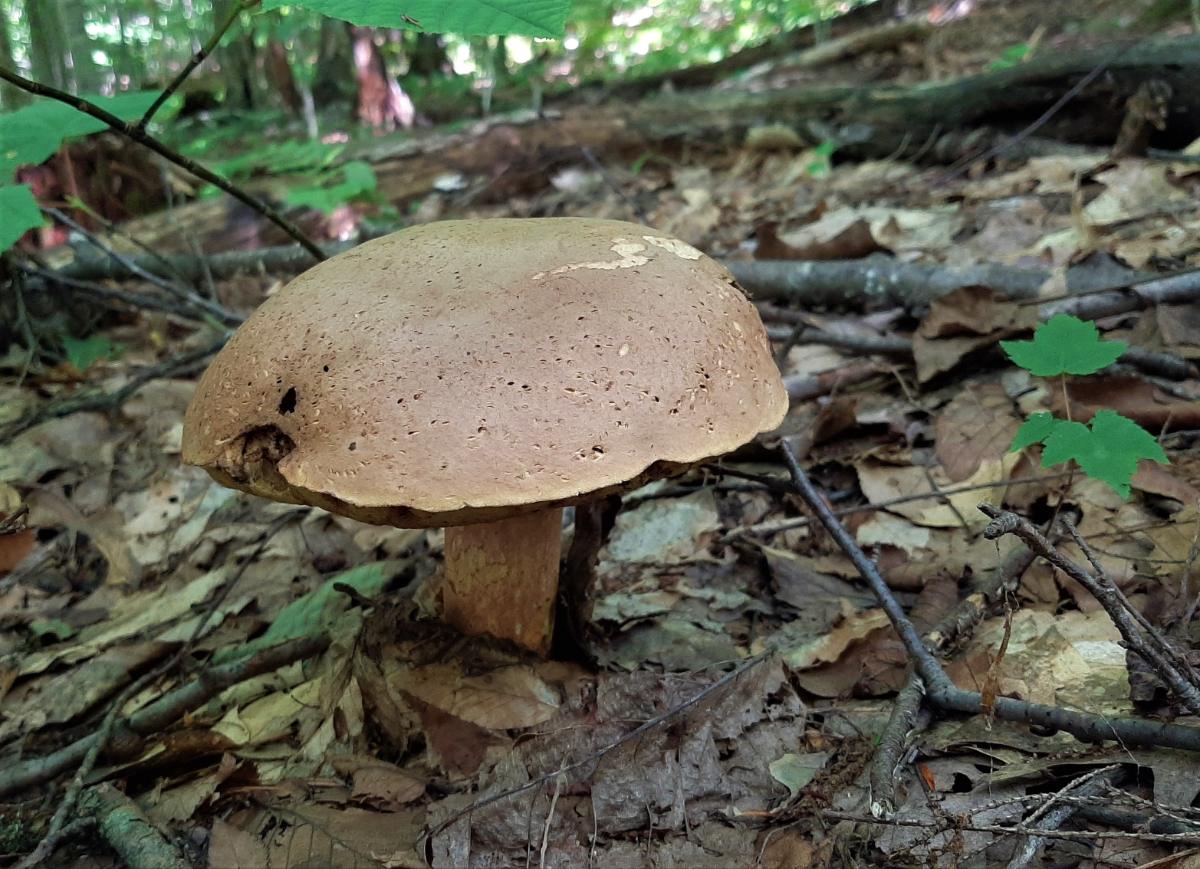
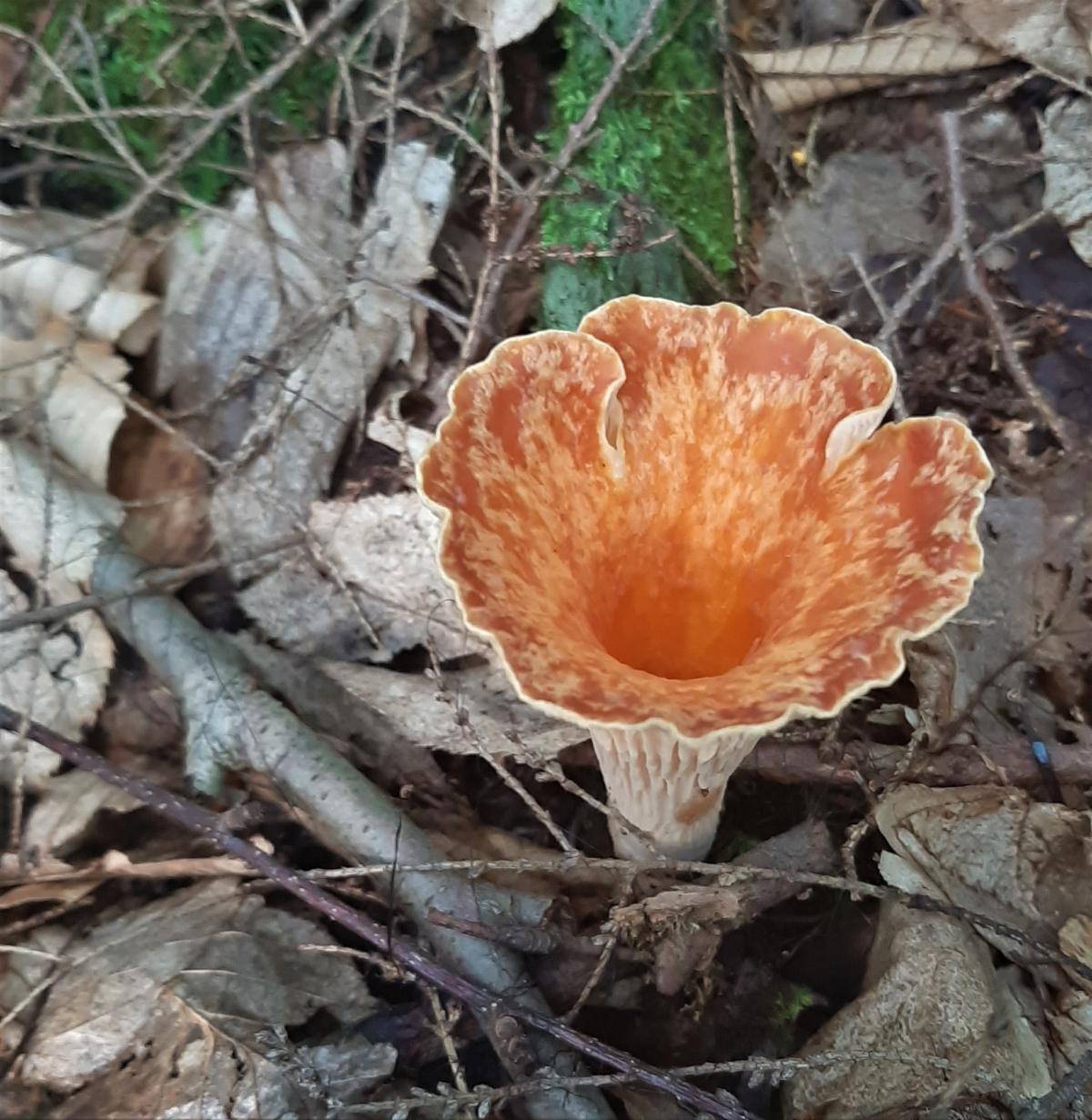
Not all mushrooms have a pileus. However it is extremely common, appearing in amanitas, agarics, and boletes to name a few. If you find a specimen with a pileus, there are a bunch of things to observe.
How To Observe A Mushroom Cap For Identification
- Shape and size. Possibly the most important thing to note. Although the familiar shape is convex, a cap can appear in many different forms. See this Wikipedia page for pictures of pileus shapes.
- Texture (brittle, soft, smooth, covered in hairs).
- Color and bruising. If you pierce the stem with a knife or fingernail does the area change color soon after?
- Hymenophore presence. Are there gills, pores, or teeth underneath the cap?
- Warts or scales on the top. This often indicates the remnants of a universal veil (volva).
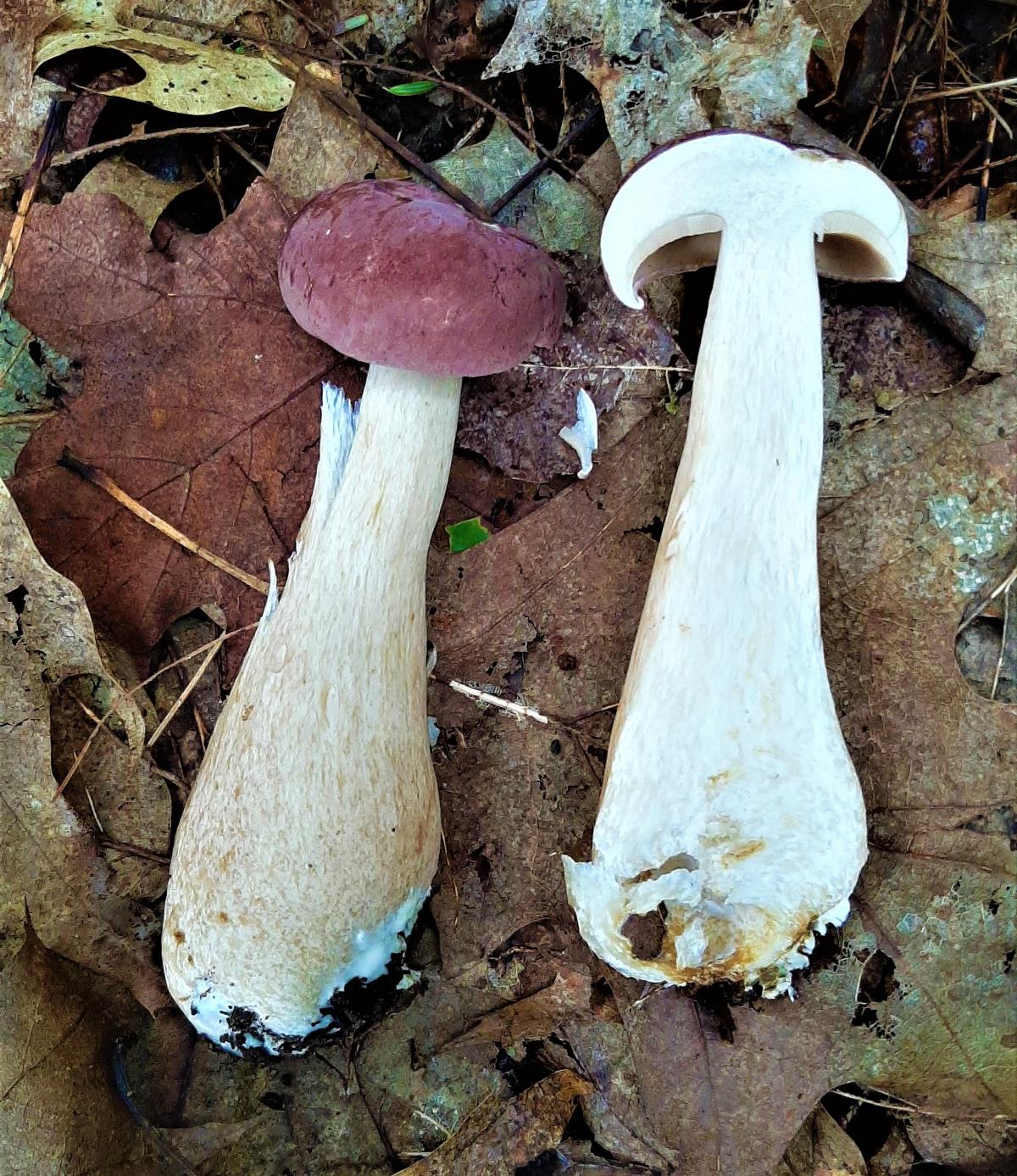
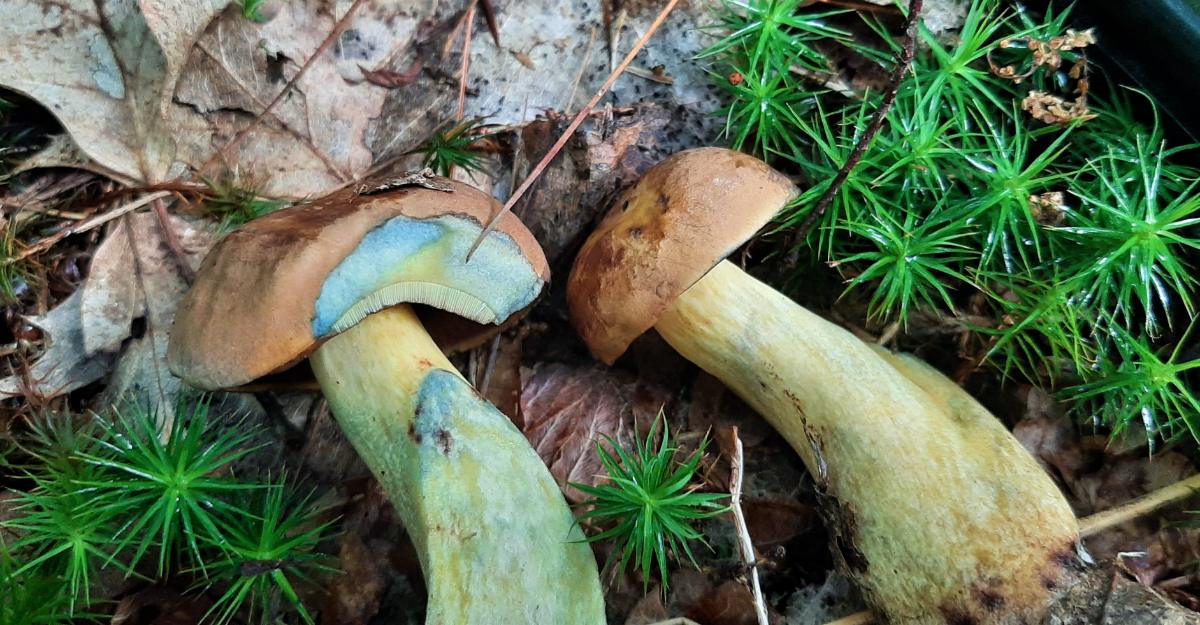
Identifying Wild Mushrooms: Smell and Taste
The next stop on our feast for the senses are the realms of smell and taste. Yes, you can use smell and taste when identifying wild mushrooms!
Test for smell by crushing a piece of the cap and examining the odor. Many mushrooms won’t have a smell at all. Others have quite a distinctive smell that should be noted and cross referenced with a local guidebook. Some well-known mushroom scents:
- Chanterelles (Cantharellus species) – fruity like apricots
- Many Agaricus species – almonds
- Marasmius scorodonius – garlic
- Stinkhorns – An unpleasant “rotting” smell. You’ll know it if you sniff it!
Be aware that not all mushrooms with scents have to smell “exactly like” something. Many have vague descriptions such as “farinaceous” (mealy, kind of like flour).
Mushroom tasting requires that you proceed with caution.
As I’ve mentioned throughout this site, there are mushrooms out there poisonous to harm you with one bite!
Never taste a mushroom that you can’t identify. Please have a pretty good idea of what you’re holding before you try it. For a taste test, rip off a small piece of the cap and place it in your mouth on the tongue for a few seconds. Then spit it out, do not swallow!
So many variations in mushroom caps and stems, or lack thereof:
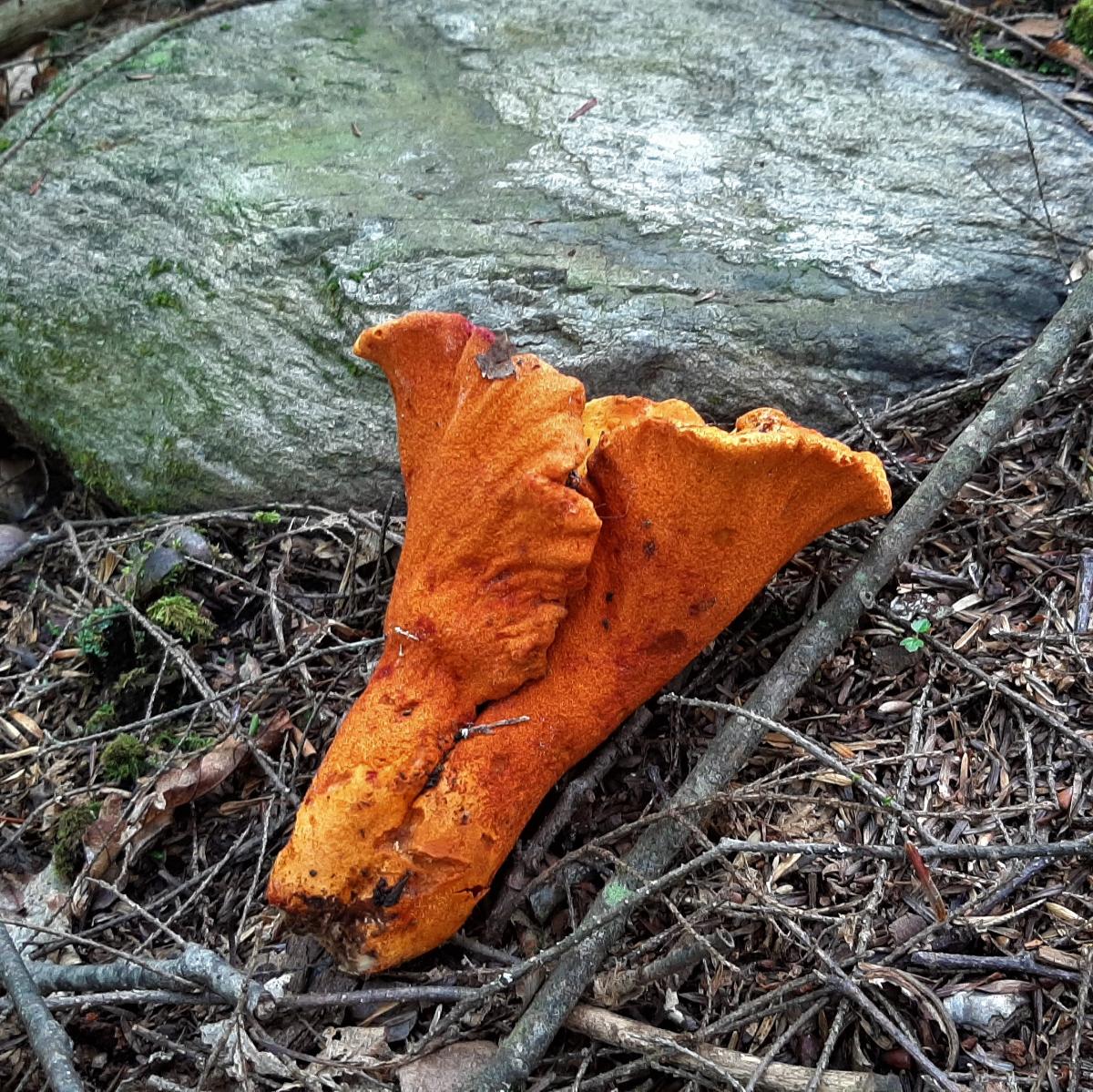
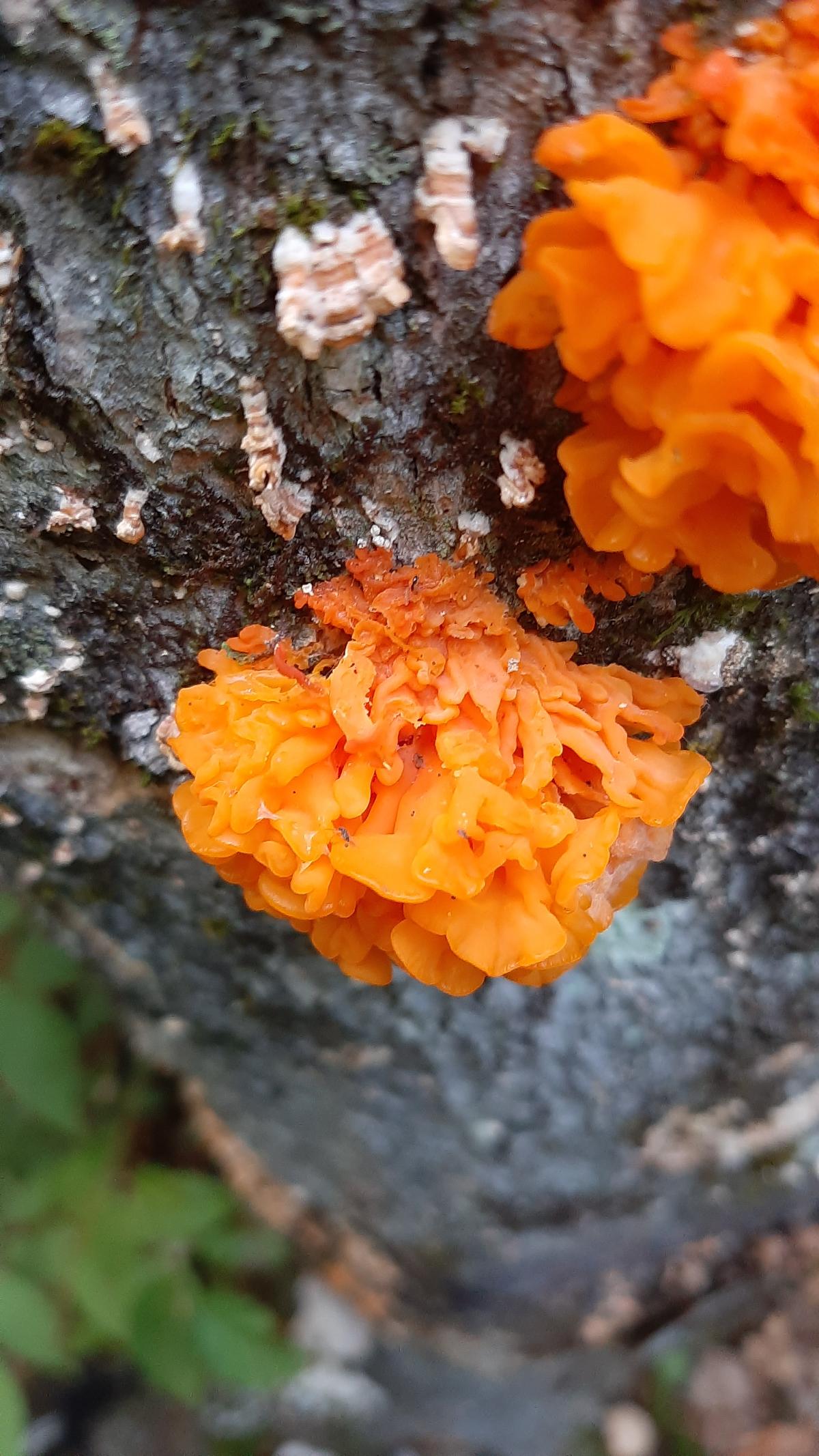
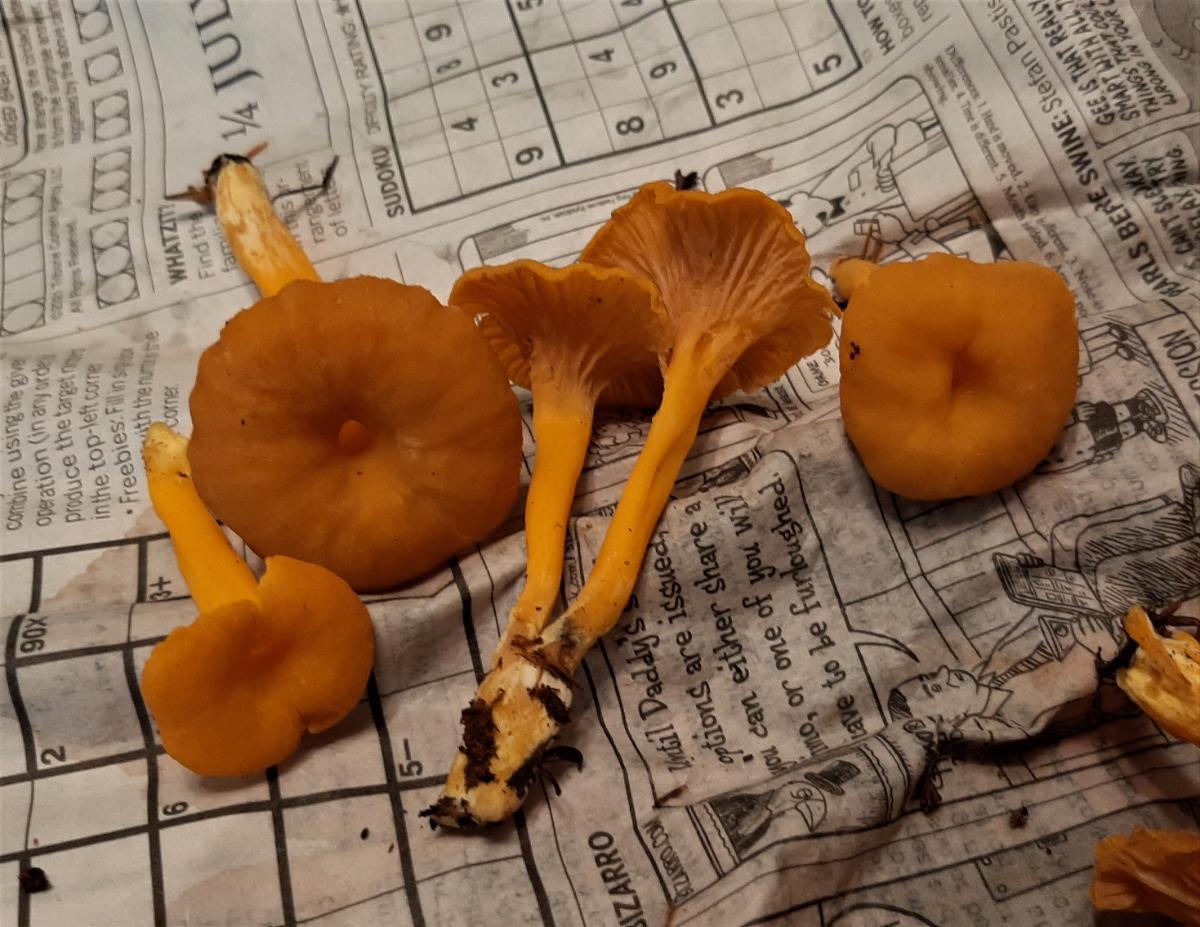
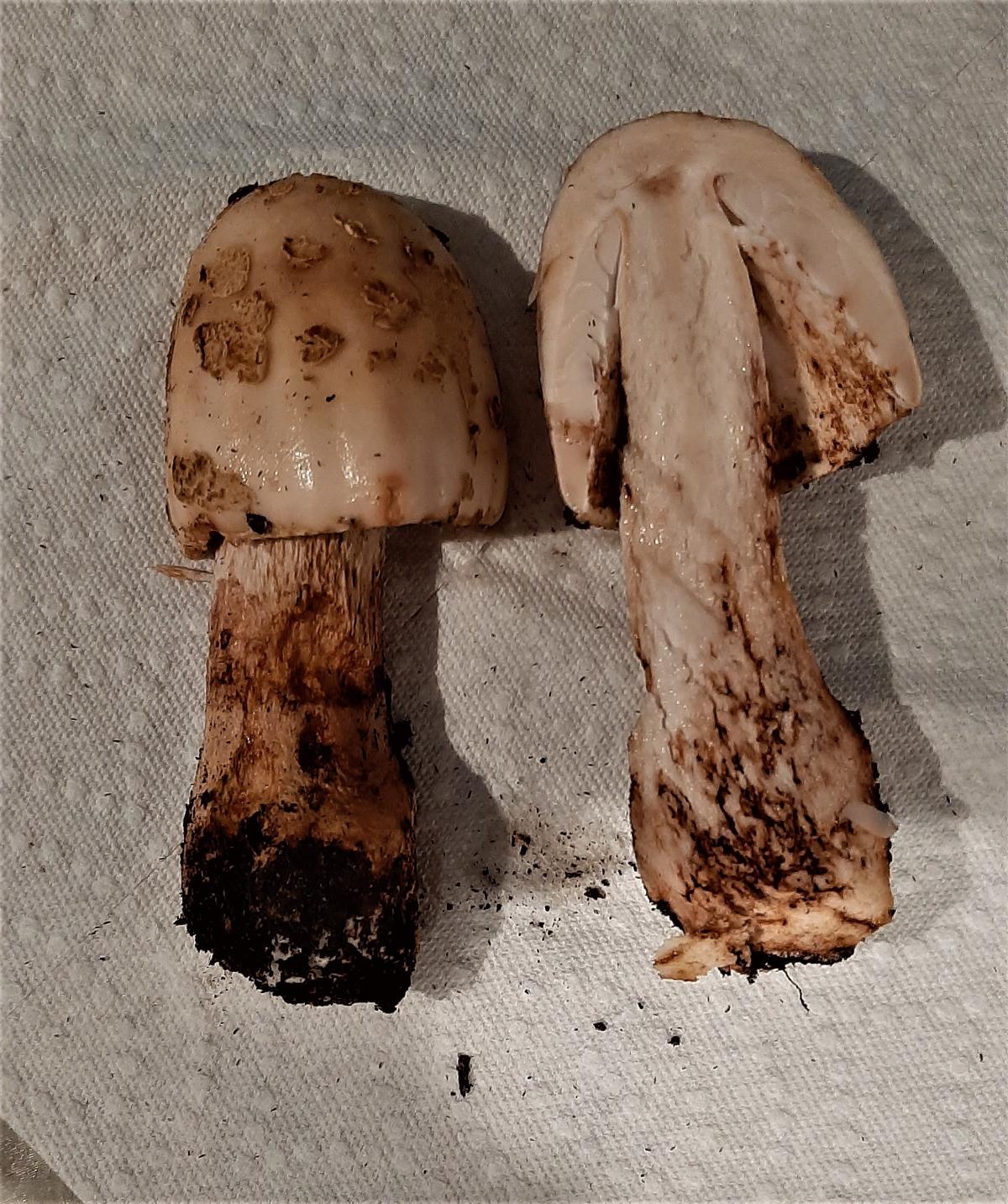
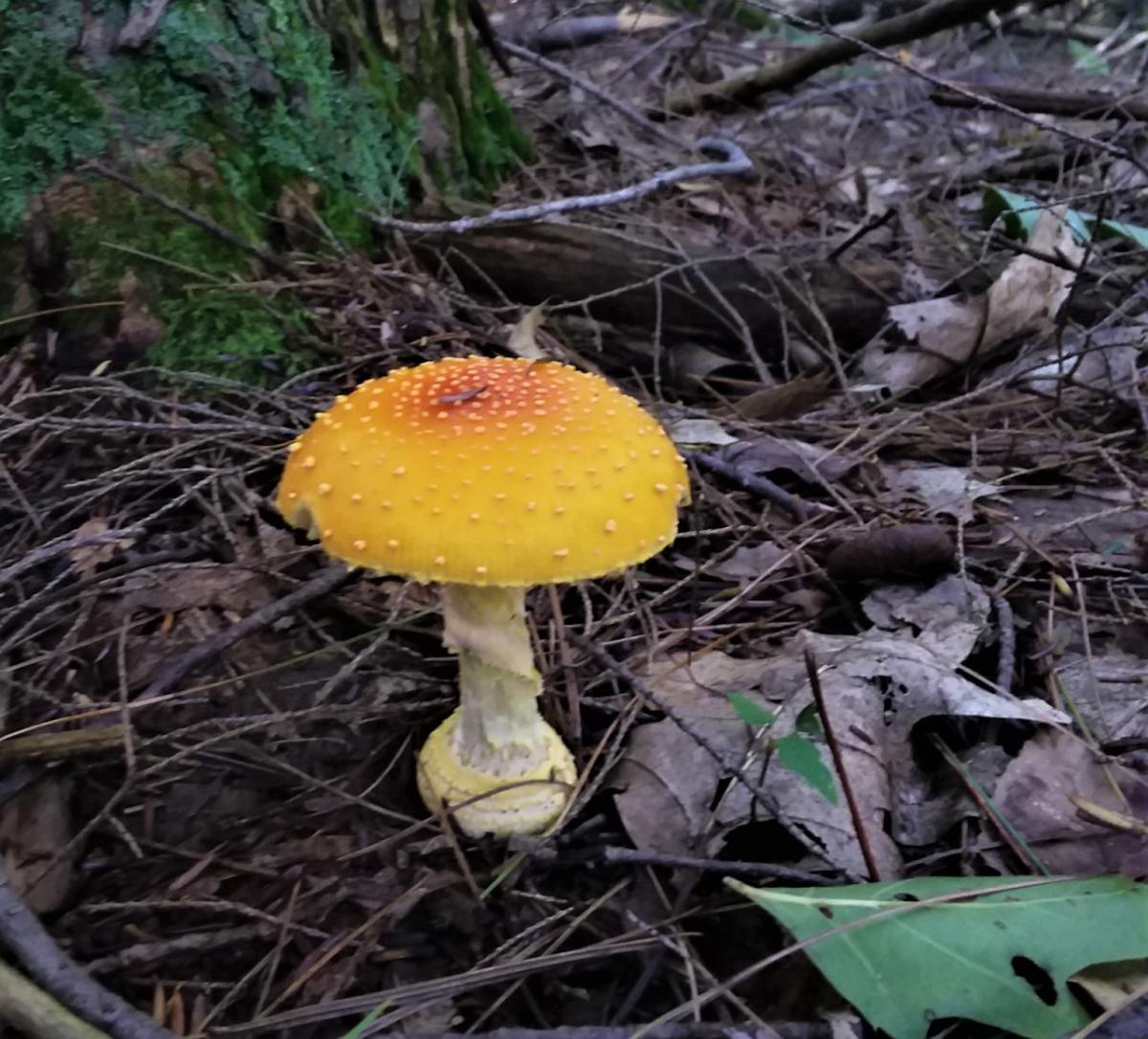
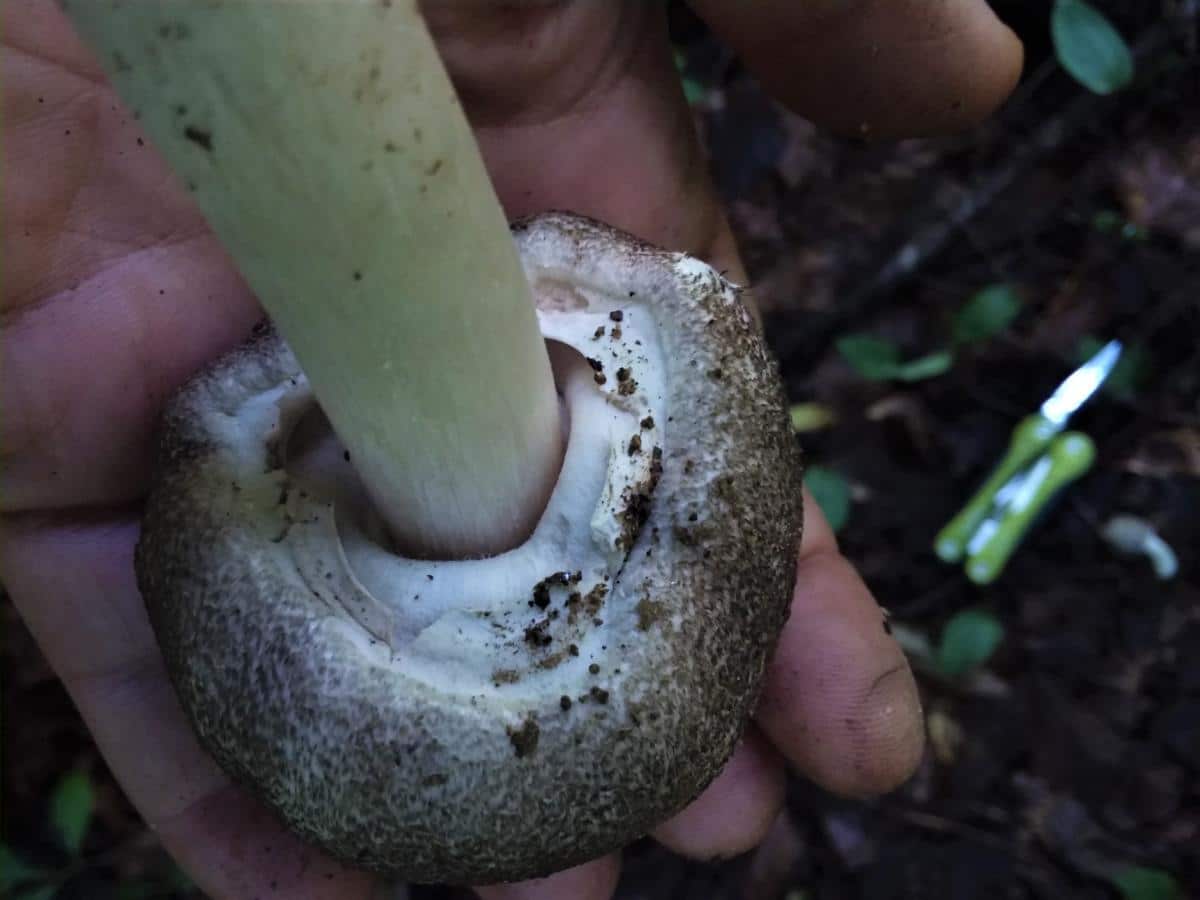
Most wild mushrooms taste bland at best, terrible at worst. For this reason and the possible danger involved, one must be cautious when identifying wild mushrooms with taste.
That wraps up the process of identifying wild mushrooms through the senses. We examined the tangible features of cap and stalk through sight and touch. Then we discussed the intangible characteristics through smell and taste.
Wait…am I missing a sensory experience? Oh yes, sound! Fortunately mushrooms don’t make any sounds we can hear.
Perhaps that can be a topic for my next page…”Supra-Human Sounds of Mycology!”


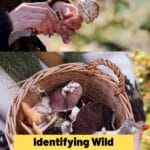
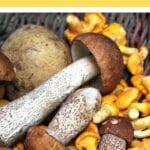

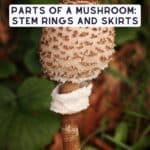
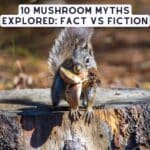
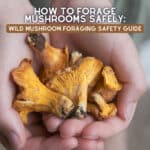
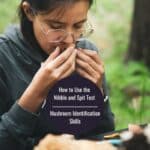
Barbara Rosen
I found some mushrooms growing from the roots of a dead oak tree.
Been drawing them!
Can you tell me what they are?
If you answer using my email address I can respond with photos.
Jenny
I don’t do personal identification from photos or drawings, but i’d LOVE to see them :-). You can post them to our facebook group (make sure to read the featured post to ensure you include all the info necessary when seeking an ID)